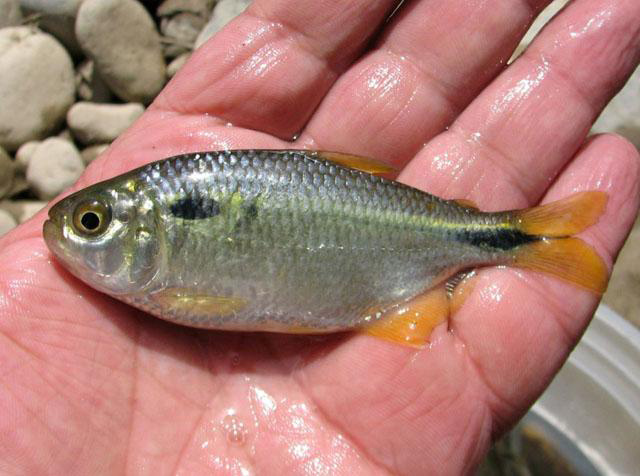| Characidae (Characins; tetras), subfamily: Stethaprioninae |
| 17.5 cm TL (male/unsexed); max.weight: 91.6 g; max. reported age: 18 years |
|
benthopelagic; freshwater; pH range: 5.5 - 7.5; dH range: 25, potamodromous |
| South America: Panama to the Amazon basin. |
|
|
| Inhabits large free flowing clear rivers, small streams, drainage ditches and artificial ponds and impoundments (Ref. 11225). Feeds on zooplankton, detritus, higher plants and sometimes on the scales of fish. Gametogenesis takes place during the dry season in time for reproduction to begin during the rainy season (Ref. 12225). Reproduction could be carried out in captivity (Ref. 27188). |
|
Least Concern (LC); Date assessed: 04 March 2021 Ref. (130435)
|
| harmless |
|
Recorded from Pardo River (Ref. 27745), Caracu and Sao Pedro streams, tributaries of the Paraná river; Pircacicaba river (Ref. 50076), Rio Jurúa (lakes and tributaries) (MZUSP No. 50281, Ref. 42843) and the Patos lagoon (Ref. 58359). Found in the Uruguay (Ref. 79585) and Acre River basins (Ref. 97592). Also Ref. 31923. |
Source and more info: www.fishbase.org. For personal, classroom, and other internal use only. Not for publication.

